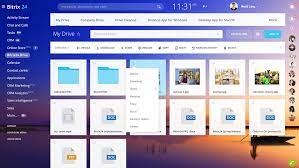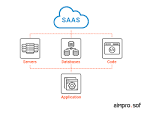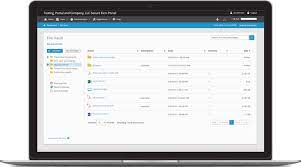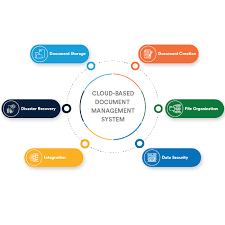Exploring the Benefits of a Java Online Compiler for Efficient Coding
The Advantages of Using a Java Online Compiler
Java is a popular programming language known for its versatility and robustness. Whether you are a beginner learning the basics of Java or an experienced developer working on complex projects, having access to an online compiler can offer several advantages.
Convenience and Accessibility
One of the primary benefits of using a Java online compiler is the convenience it provides. You can write, compile, and run your Java code directly from your web browser without the need to install any software locally. This accessibility allows you to work on your projects from any device with an internet connection.
Instant Feedback
Online compilers typically provide instant feedback on your code, highlighting syntax errors and offering suggestions for improvement. This immediate feedback can help you identify and correct errors more efficiently, speeding up the development process.
Collaboration and Sharing
Many online compilers offer features that enable collaboration among team members or sharing code snippets with others. This can be especially useful for code reviews, pair programming, or seeking help from the community. By sharing your code online, you can receive feedback and insights from fellow developers around the world.
Experimentation and Learning
For beginners learning Java, an online compiler provides a safe environment to experiment with code without worrying about setting up development environments or damaging local files. You can quickly try out different concepts, test small programs, and see immediate results, which can enhance your learning experience.
Cost-Effective Solution
Using a Java online compiler eliminates the need to invest in expensive development tools or IDEs. Most online compilers are free to use, making them a cost-effective solution for individuals or small teams looking to develop Java applications without incurring additional expenses.
Conclusion
In conclusion, a Java online compiler offers numerous advantages such as convenience, instant feedback, collaboration opportunities, learning support, and cost-effectiveness. Whether you are coding on-the-go or seeking feedback from peers, integrating an online compiler into your workflow can enhance your Java programming experience.
5 Essential Tips for Choosing and Using an Online Java Compiler Effectively
- Choose a reliable and secure online Java compiler to ensure the safety of your code.
- Look for features such as syntax highlighting, auto-completion, and error detection to enhance your coding experience.
- Familiarize yourself with the compiler’s user interface and functionalities to work efficiently.
- Consider saving your code regularly or using version control to prevent loss of work.
- Explore online Java compiler tutorials and documentation to maximize your understanding of its capabilities.
Choose a reliable and secure online Java compiler to ensure the safety of your code.
When utilizing a Java online compiler, it is crucial to select a reliable and secure platform to safeguard the integrity and confidentiality of your code. By choosing a trusted online Java compiler, you can ensure that your code remains protected from potential threats and vulnerabilities. Prioritizing security measures not only preserves the confidentiality of your work but also instills confidence in the reliability of the compiler, allowing you to focus on coding without concerns about data breaches or unauthorized access.
Look for features such as syntax highlighting, auto-completion, and error detection to enhance your coding experience.
When utilizing a Java online compiler, it is beneficial to seek out features like syntax highlighting, auto-completion, and error detection to elevate your coding experience. These functionalities not only help in writing code more efficiently but also aid in identifying and rectifying errors promptly. Syntax highlighting assists in visually distinguishing different elements of your code, auto-completion speeds up the coding process by suggesting possible completions as you type, and error detection alerts you to potential mistakes, enabling you to address them before running the code. By leveraging these features, you can streamline your coding workflow and enhance the overall quality of your Java programming projects.
Familiarize yourself with the compiler’s user interface and functionalities to work efficiently.
To make the most of a Java online compiler, it is essential to familiarize yourself with its user interface and functionalities. Understanding how the compiler works and exploring its features can significantly enhance your efficiency and productivity. By mastering the tools available within the compiler, you can streamline your coding process, troubleshoot errors effectively, and leverage advanced functions to optimize your Java development workflow. Taking the time to learn the ins and outs of the compiler will empower you to work more confidently and proficiently on your Java projects.
Consider saving your code regularly or using version control to prevent loss of work.
When using a Java online compiler, it is essential to consider saving your code regularly or utilizing version control systems to prevent the loss of your work. Online environments may have limitations or unexpected interruptions that could result in data loss if not saved periodically. By saving your code frequently or using version control tools like Git, you can safeguard your progress and ensure that you have access to previous versions of your code in case of any unforeseen issues. This practice helps maintain the integrity of your work and provides a safety net against potential setbacks.
Explore online Java compiler tutorials and documentation to maximize your understanding of its capabilities.
To maximize your understanding of the capabilities of a Java online compiler, it is highly recommended to explore tutorials and documentation provided by the platform. These resources can offer valuable insights into various features, functionalities, and best practices for utilizing the compiler effectively. By delving into tutorials and documentation, you can enhance your proficiency in using the Java online compiler, enabling you to leverage its full potential for coding projects and development tasks.











